radio frequency interference how to find it and fix it
Introduction
With the plethora of wireless devices, increasing broadcast, communications, and other RF sources all competing for radio spectrum, the chances of radio frequency interference (RFI) will only increase. This article explains how to identify, characterize, and locate typical interfering sources.
CATEGORIES OF INTERFERENCE
There are two broad categories of interference; narrow band and broadband (Figure 1).
Narrow Band – this would include continuous wave (CW) or modulated CW signals. Examples might include clock harmonics from digital devices, co-channel transmissions, adjacent-channel transmissions, intermodulation products, etc. On a spectrum analyzer, this would appear to be narrow vertical lines or slightly wider modulated vertical bands associated with specific frequencies.
Broadband – this would primarily include switch-mode power supply harmonics, arcing in overhead power lines (power line noise), wireless digitally-modulated systems (such as Wi-Fi or Bluetooth), or digital television. On a spectrum analyzer, this would appear to be broad ranges of signals or an increase in the noise floor. Power line noise or switch-mode power supplies are the most common sources.
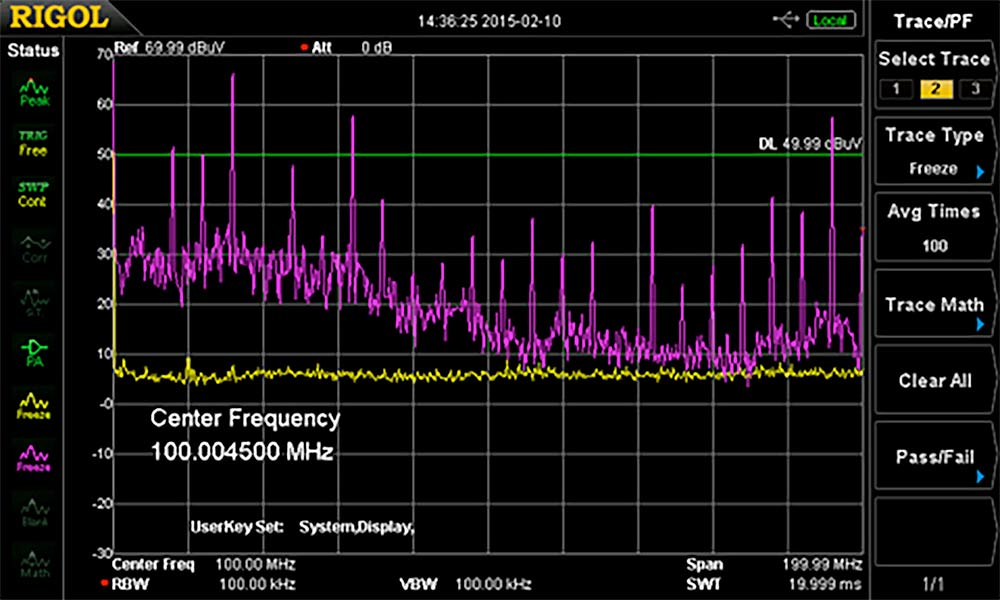
Figure 1. An example spectral plot from 9 kHz to 200 MHz of narrow band harmonics (vertical spikes) riding on top of broadband interference (broad area of increased noise floor). The yellow trace is the baseline system noise.
TYPES OF INTERFERENCE
Some of the most common types of interference are described below.
Co-Channel Interference – more than one transmitter (or digital harmonic) using, or falling into, the same receive channel.
Adjacent-Channel Interference – a transmitter operating on an adjacent frequency whose energy spills over
into the desired receive channel.
Intermodulation-Based Interference – occurs when energy from two, or more, transmitters mix together to produce spurious frequencies that land in the desired receive channel. Third-order mixing products are the most common and usually, this occurs from nearby transmitters. An example of potential intermodulation might occur in a strong signal area for FM broadcast.
Fundamental Receiver Overload – this is normally caused by a strong, nearby, transmitter simply overloading the receiver front-end or other circuitry, causing interference or even suppression of the normal received signal. A common example is VHF paging transmitters interfering with receivers.
Power Line Noise (PLN) – This is a relatively common broadband interference problem that is typically caused by arcing on electric power lines and associated utility hardware. It sounds like a harsh raspy buzz in an AM receiver. The interference can extend from very low frequencies below the AM broadcast band, and depending on proximity to the source, into the HF spectrum. If close enough to the source, it can extend up through the UHF spectrum.
Switch-Mode Power Supplies – Switch-mode power supplies are very common and are used for a variety of consumer or commercial products and are a common source of broadband interference. Lighting devices, such as the newer LED-based lights or commercial agricultural "grow" lights, are another strong source of interference.
Other Transmitters – There are several transmitter types that commonly cause RFI:
- Two-Way or Land Mobile Radio – Strong interfering FM signals may result in "capture effect", or over-riding of the desired received signal.
- Paging Transmitters – Paging transmitters are generally very powerful FM or digitally modulated transmissions that can overload receiver Digital paging will sound very raspy, like a power saw or buzzing, and may interfere with a wide range of receive frequencies. Fortunately, most of the VHF paging transmitters moved to the 929/931 MHz frequency pairs, so this is not the issue it once was.
- Broadcast Transmitters – Broadcast transmitter interference will have modulation characteristics similar to their broadcasts – AM, FM, video carriers, or digital signals.
Cable Television – Signal leakage from cable television systems will generally occur on their prescribed channel assignments. Many of these channels overlap existing over-the-air radio communications channels. If the leaking signal is a digital channel, interference will be similar to wideband noise (a digital cable channel is almost 6 MHz wide).
Wireless Network Interference – Interference to wireless networks (Wi-Fi, Bluetooth, etc.) is increasingly common, and with the proliferation of mobile, household (IoT), and medical devices incorporating Wi-Fi and other wireless modes, this issue is likely to get worse. More details on wireless interference will be found in the companion article, Wireless Network Interference and Optimization.
LOCATING RFI
SIMPLE DIRECTION FINDING (DFING)
DF Techniques – There are two primary methods for DFing. (1) "Pan 'N Scan" where you "pan" a directional antenna and "scan" for the interfering signal, recording the direction on a map, while keeping note of intersecting lines. (2) "Hot and Cold" where an omni-directional antenna is used while watching the signal strength. In this method, the rule of thumb is for every 6 dB change you've either doubled or halved the distance to the interfering source. For example, if the signal strength was -30 dBm at one mile from the source, traveling to within a half-mile should read about -24 dBm on the spectrum analyzer.
DF Systems – Radio direction-finding (RDFing) equipment can be installed into a vehicle or used portable. For vehicular use, there are several automated Doppler direction-finding systems available. Some examples include:
- Antenna Authority (mobile, fixed and portable) www.antennaauthorityinc.com
- Doppler Systems (mobile and fixed) www.dopsys.com
- Rohde & Schwarz (mobile, fixed, and portable) http://www.rohde-schwarz.com
Step Attenuator – You'll also find a step attenuator quite valuable during theprocess of DFing. This allows control over the signal strength indication (and receiver overload) as you approach the interference source. The best models come in steps of 10 dB and have a range of at least 80 dB, or more. Step attenuators may be purchased through electronics distributors, such as DigiKey, etc. Commercial sources would include Narda Microwave, Fairview Microwave, Arrow, and others.
LOCATING POWER LINE INTERFERENCE
For Low Frequency Interference – particularly power line noise (PLN) – the interference path can include radiation due to conducted emissions along power lines. Therefore, when using the "Hot and Cold" method you'll need to be mindful that the radiated noise will generally follow the route of the power lines, peaking and dipping along the route. The maximum peak usually indicates the actual noise source. As a complication, there may be several noise sources – some possibly long distances away.
Antennas – For simply listening to power line noise, the built-in "loopstick" antenna on an AM broadcast band radio or telescoping antenna on a shortwave radio may work well. However, for tracking down power line noise to the source pole, and typically for DFing other interfering sources, you'll want to use higher frequencies. A simple directional Yagi, such as the Arrow II 146-4BP (Figure 17) with three piece boom (www.arrowantennas.com) can be assembled quickly and attached to a short length of pipe and works well to receive this type of broadband RFI.
Use of VHF Receivers – Whenever possible, you'll generally want to use VHF or higher frequencies for DFing. The shorter wavelengths not only help in pinpointing the source, they also make smaller handheld antennas more practical.
Signature Analyzers – These are time-domain interference-locating instruments that produce a distinct "signature" of an interfering signal. This would include instruments produced by Radar Engineers (Figure 2). They are the best solution for tracking down power line noise and consumer devices that produce repetitive noise bursts with known periodicity.
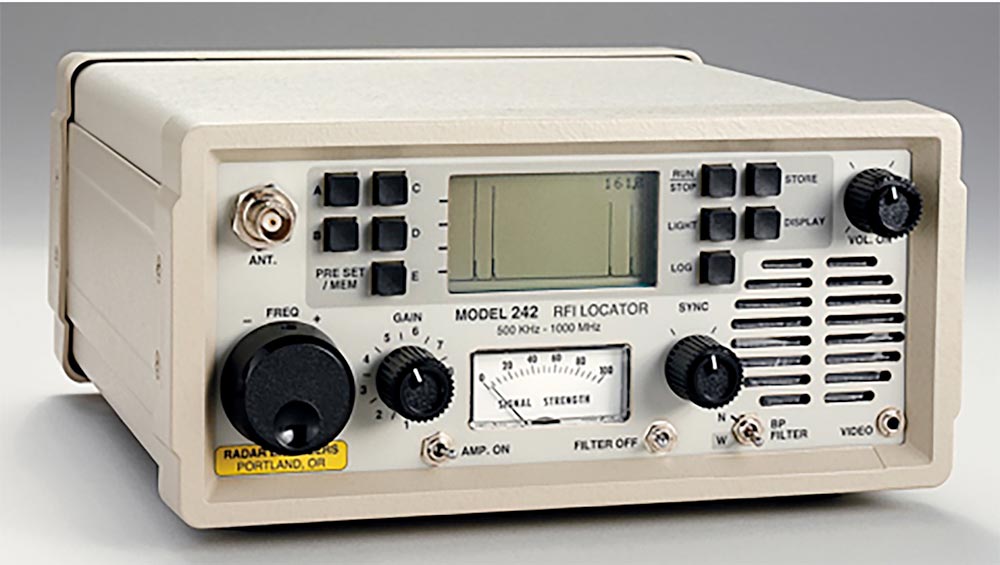
Figure 2. A signature analyzer from Radar Engineers that tunes from 500 kHz to 1 GHz and which displays an electronic "signature" of a specific interference source. Receivers such as this are used by professional investigators to track down power line noise (photo courtesy, Radar Engineers).
LOCATING NARROW BAND INTERFERENCE
For most narrow band interference sources, such as co-channel, adjacent channel, and intermodulation interference, the recommended tool is the spectrum analyzer, as this allows you to focus on particular frequency channels or bands and see the big picture of what's occurring. Once the interfering signal is identified, the analyzer can then be used to DF the signal.
USING SPECTRUM ANALYZERS
Spectrum analyzers display frequency versus amplitude of RF signals. They can be helpful in determining the type and frequencies of interfering signals, especially for narrow band interference. There are two types of analyzers; swept-tuned and real time.
Swept-tuned analyzers are based on a superheterodyne principle using a tunable local oscillator and can display a desired bandwidth from start to stop frequencies. They are useful for displaying constant, or near constant, signals, but have trouble capturing brief intermittent signals, due to the lengthy sweep time.
A real-time analyzer samples a portion of the spectrum using digital signal processing techniques to analyze the captured spectrum. They are able to capture brief intermittent signals and are ideal for identifying and locating signals that may not even show up on swept analyzers. Most real-time bandwidths are limited to 27 to 500 MHz, maximum. The Signal Hound BB60C and Tektronix RSA306 are both relatively inexpensive real-time spectrum analyzers that are USB-powered and use a PC for control and display.
One important point to keep in mind regarding the use of spectrum analyzers is that because they have an un-tuned front end, they are particularly susceptible to high-powered nearby transmitters off frequency from where you may be looking. This can create internal intermodulation products (spurious responses) or erroneous amplitude measurements that are very misleading. When using spectrum analyzers in an "RF rich" environment, it's important to use bandpass filters or tuned cavities (duplexers, for example) at the frequency of interest.
Spectrum analyzers are also useful to characterize commercial broadcast, wireless, and land mobile communications systems. For wireless or intermittent interference, real-time analyzers work best. If used for tracking PLN, it's best to place the analyzer in "zero-span" mode to observe the amplitude variation. Placing the analyzer in "Line Sync" may also be helpful.
COMMERCIAL INTERFERENCE HUNTING SYSTEMS
There are several manufacturers of interference hunting or direction-finding systems. I'd like to describe four of these, Aaronia, Narda, Rhode & Schwarz, and Tektronix. As mentioned previously, for intermittent interference (particularly for commercial communications installations) or digitally-modulated signals, a real-time spectrum analyzer is the best tool and has the ability to capture brief, intermittent, signals; some as short as a few microseconds. Examples might include the Aaronia Spectran V5 series. Tektronix RSA-series, or Narda IDA2.
Aaronia – Aaronia not only has the lightest portable system for Dfing, but the biggest and heaviest-looking. Their Spectran V5 Handheld is the smallest real time analyzer. Mapping is not an option on this model, but the larger Spectran V5 XFR PRO is a ruggedized laptop that can use open-source maps and has triangulation features. Aaronia also has a variety of affordable directional antennas and a combination GPS/compass may be mounted on some models.

Figure 3. The Aaronia Spectran V5 handheld real-time analyzer is the smallest self-contained unit and tunes from 9 kHz to 6 GHz. Other models have upper frequencies of 12 and 18 GHz.
Aaronia is also unique in that they've developed a drone detection system comprised of a 3D tracking antenna, the model IsoLOG 3D with options from 9 kHz to 40 GHz in 360 degrees. This matches up with their Spectran Command Center with triple LCD screens. See the references for more information on that system.
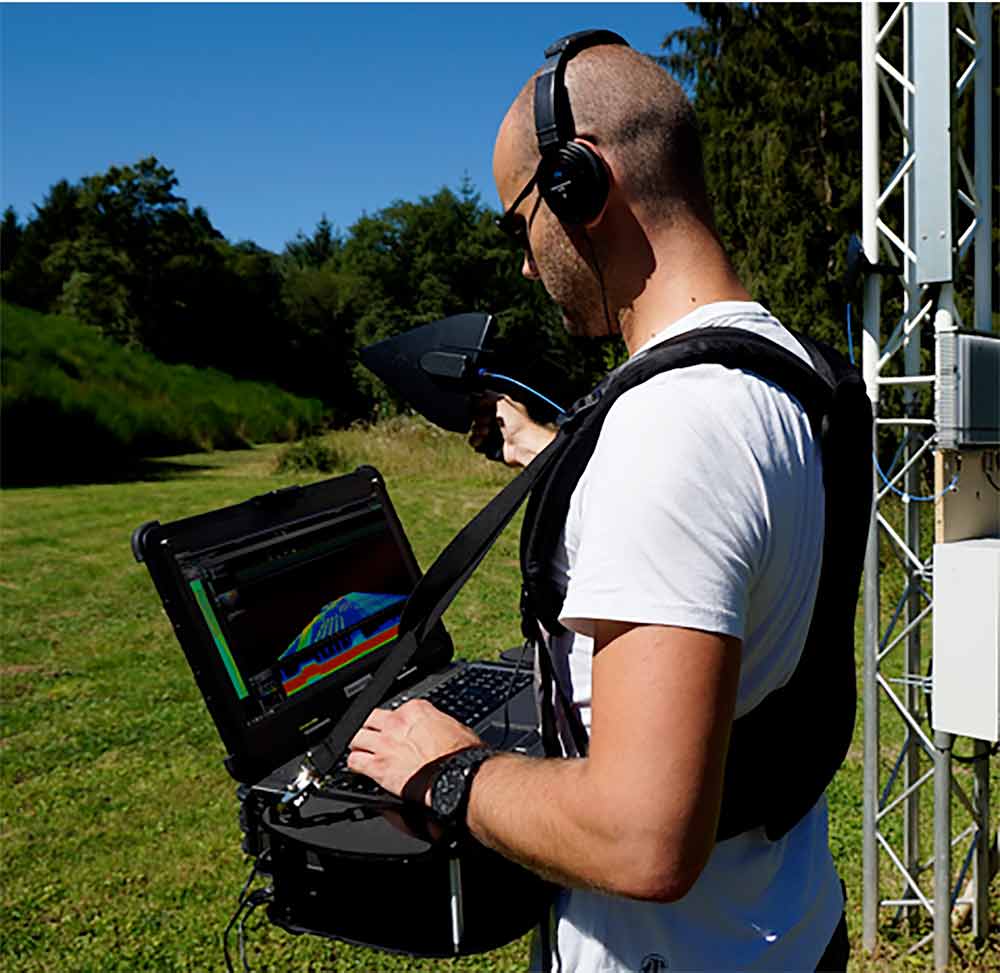
Figure 4. The Aaronia Spectran V5 XFR PRO in the field portable configuration.
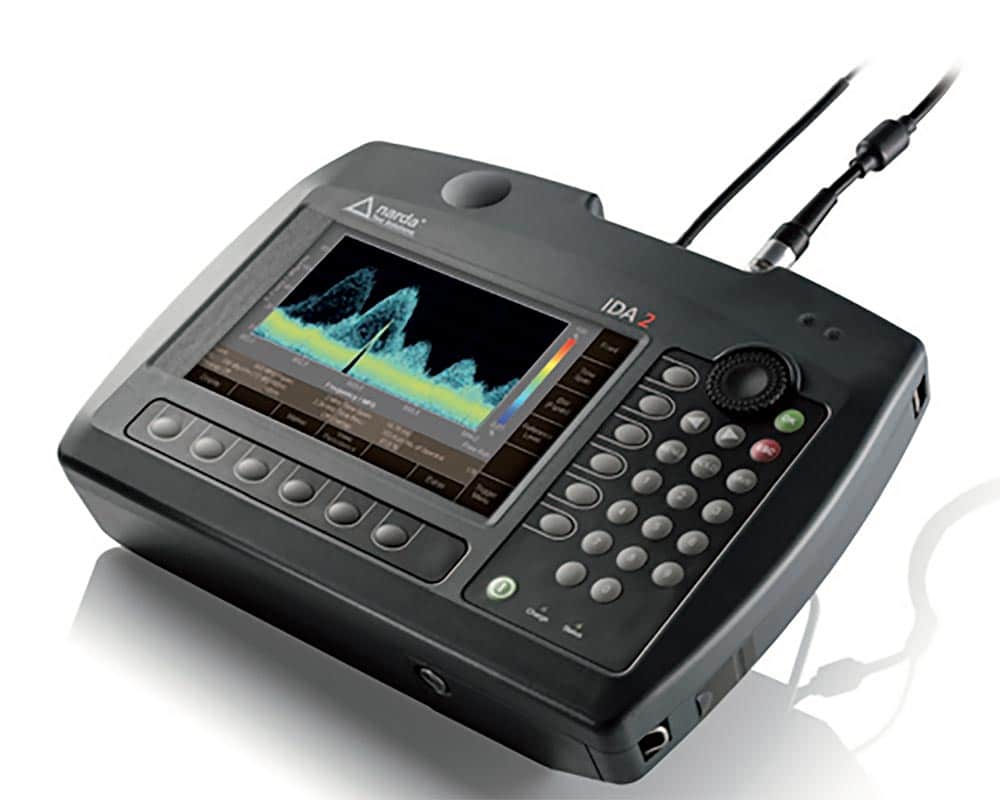
Figure 5. The Narda IDA2 spectrum analyzer and interference hunting system. The frequency range is 9 kHz to 6 GHz. Photo, courtesy Narda STS.
Narda Safety Test Solutions – Narda has a similar interference analyzer, the Model IDA2 with a real-time bandwidth of 32 MHz and frequency range of 9 kHz to 6 GHz. There are a variety of directional antennas available with built-in GPS and compass. This system also relies on open-source mapping tools, such as Open Street Maps (http://www.openstreetmaps.org). It is battery-operated for easy portable use.
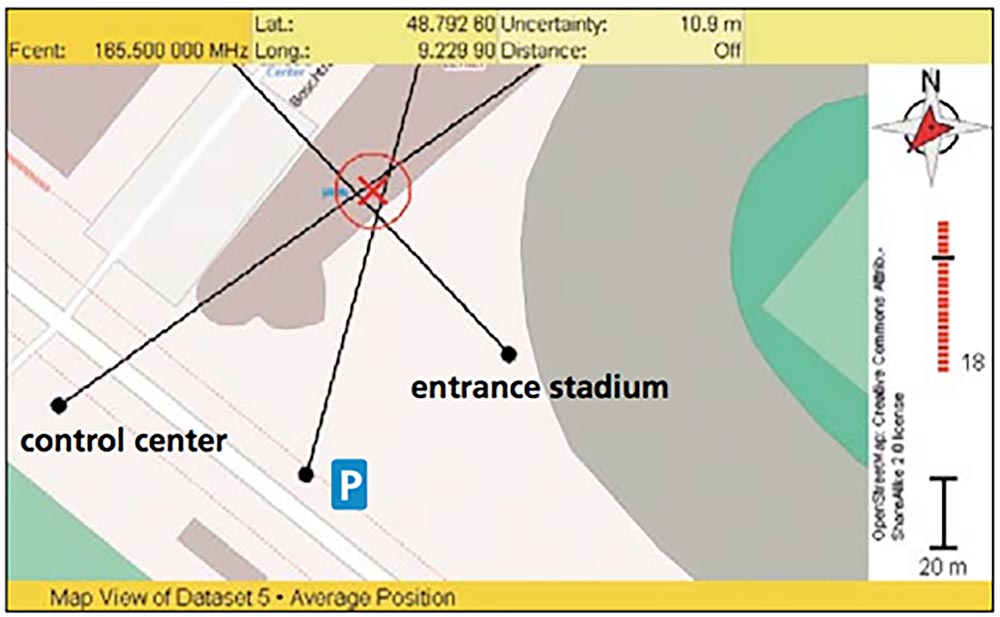
Figure 6. The mapping software with bearing lines drawn showing triangulation of an interference source. Photo, courtesy Narda STS.
Rohde & Schwarz – Rohde & Schwarz has a portable system (Figure 7) that can quickly identify most interference sources and can also use imported mapping feature and GPS/compass in the antenna to triangulate the interfering source. Several fixed, mobile, or portable antennas are available for different frequency bands. This system also relies on open-source mapping tools, such as Open Street Maps (http://www.openstreetmaps.org). It is battery-operated for easy portable use.
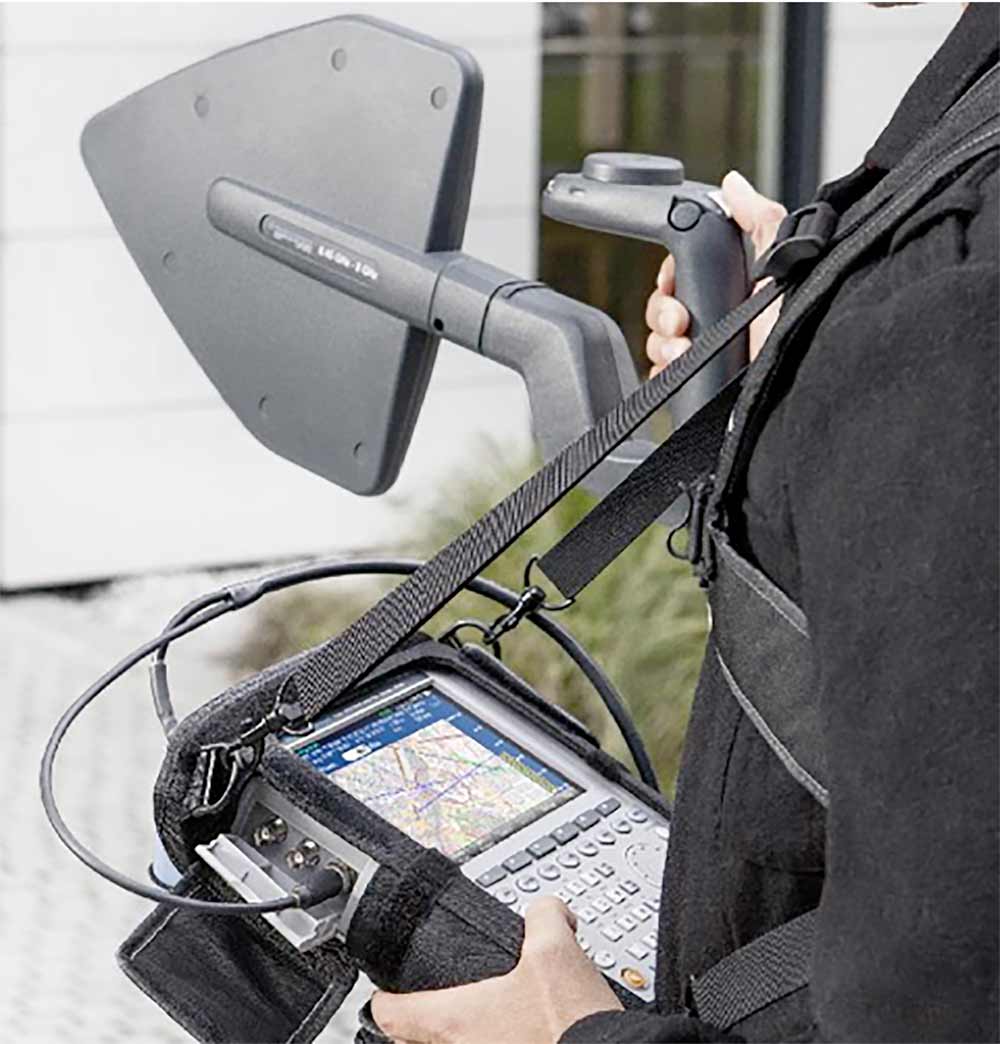
Figure 7. The Rohde & Schwarz R&S®PR100 custom spectrum analyzer with mapping and triangulation and R&S®HE300 antenna. The R&S® FSH analyzer may also be used. Photo courtesy, Rohde & Schwarz.
Tektronix – Tektronix also has a means of Dfing and mapping with their real time DSA-series spectrum analyzers. The USB-controlled RSA507A is noteworthy due to it's built-in battery and portable capability. It also offers 40 MHz real-time bandwidth. By connecting it to a tablet PC, such as the Panasonic Toughpad model FG-Z1 and
with the Alaris DR-A0047 antenna, you have a self-contained portable DF hunting tool (Figure 9). This system also relies on open-source mapping tools, such as Open Street Maps (http://www.openstreetmaps.org).
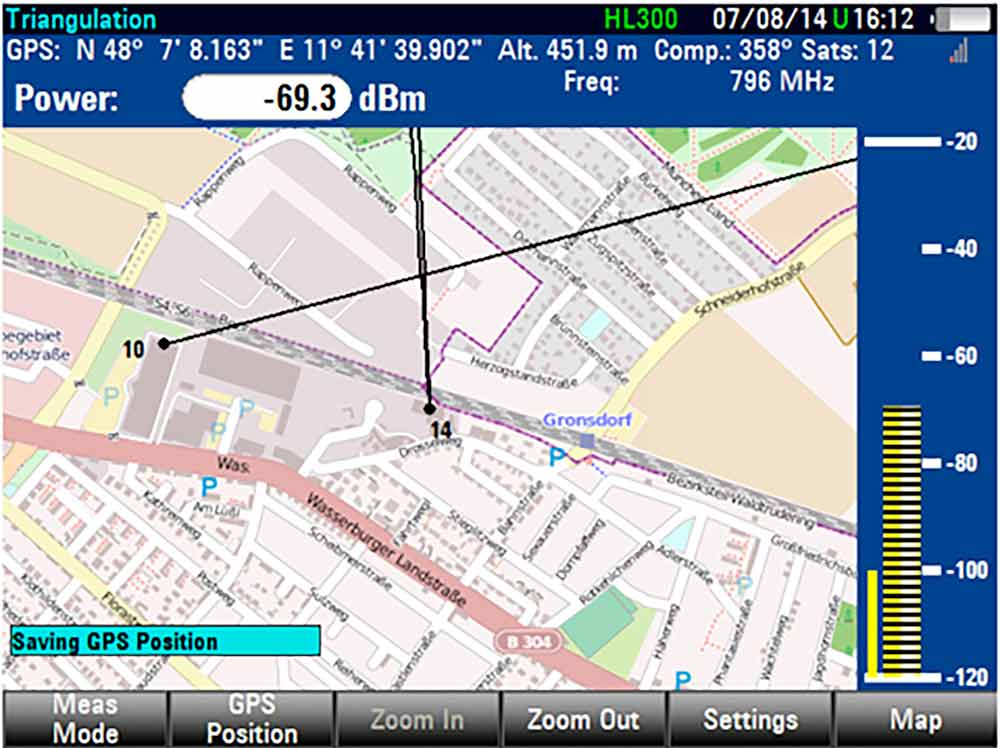
Figure 8. The mapping application for the R&S® FSH analyzer. Photo courtesy, Rohde & Schwarz
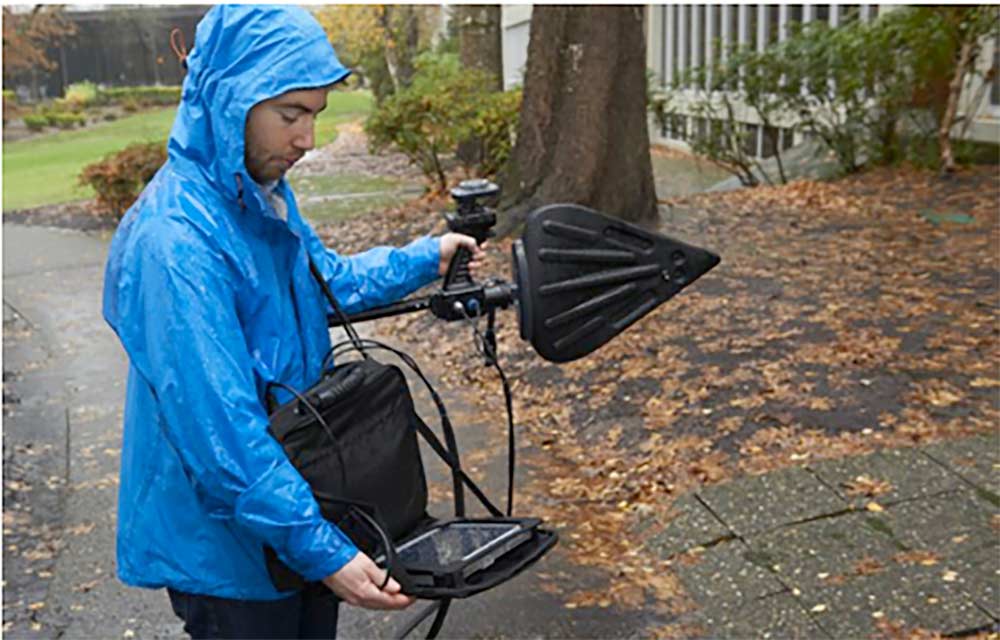
Figure 9. The Tektronix spectrum analyzer with mapping/triangulation and Alaris DR-A0047 antenna. Photo, courtesy Tektronix.
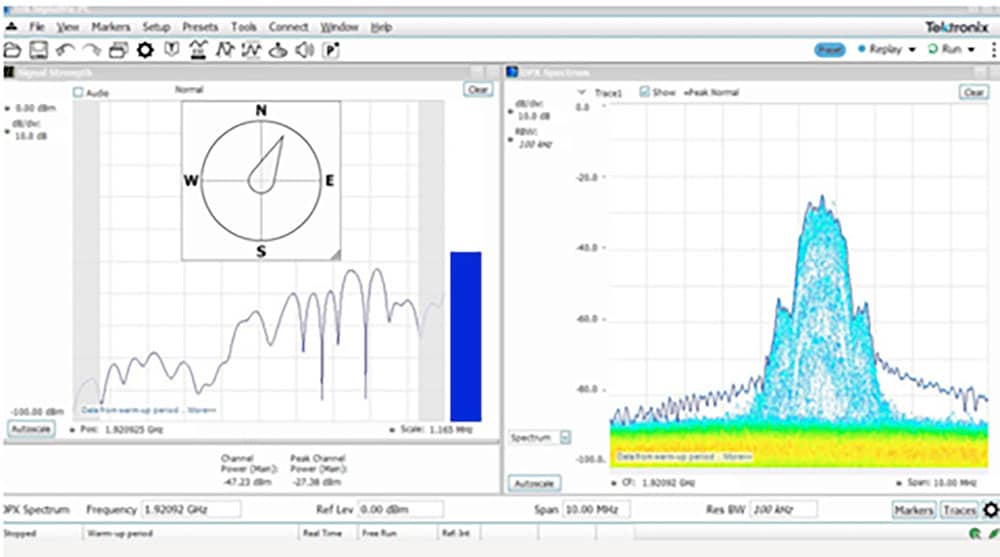
Figure 10. When the SignalVu-PC software with mapping option is connected to one of their RSA-series real time spectrum analyzers and Alaris directional antenna, the compass direction is automatically shown, along with the spectral display of the signal in question. Photo, courtesy Tektronix.
Tektronix provides their SignalVu-PC with Mapping option to help identify and capture interfering signals. The mapping option allows bearing lines to be marked on the map to triangulate the source of interference.

Figure 11. Flipping over to the mapping option of SignalVu-PC, allows you to record bearing lines to the interfering source, with the triangulation showing the approximate location of the source. Photo, courtesy Tektronix.
Summary
With today's increasing use of wireless devices, broadcast, communications, military and other RF sources all competing for radio spectrum, the chances of radio frequency interference (RFI) will only increase. With the proper tools, broadcast and communications engineers are able to quickly identify and eliminate sources of interference as they are detected. The latest real-time spectrum analyzers make the job even more efficient.
Manufacturers Mentioned
- Aaronia AG http://www.aaronia.com
- Narda Safety Test Solutions https://www.narda-sts.com/en/
- Radar Engineers http://www.radarengineers.com
- Rohde & Schwarz https://www.rohde-schwarz.com/us/home_48230.html
- Tektronix http://www.tek.com
References
- Handheld Interference Hunting (R&S video)
- Automated Interference Hunting in Multipath Environments (R&S video)
- Advanced Interference Hunting and Emitter Location (R&S)
- Interference Hunting with R&S®FSH (R&S)
- Locating A Signal Source (R&S)
- Interference Hunting (Tektronix)
- Hunting Interference with the Tektronix RF Scout (Tektronix)
- Finding, Classifying, and Analyzing Interfering Signals (Tektronix)
- Clock Radio Disrupts VHF Reception (Narda STS)
- Analysis of Jamming Systems for Mobile Phone (Narda STS)
- Drone Detection System (Aaronia)
radio frequency interference how to find it and fix it
Source: https://interferencetechnology.com/identifying-and-locating-radio-frequency-interference-rfi/
Posted by: stollprideaped.blogspot.com

0 Response to "radio frequency interference how to find it and fix it"
Post a Comment